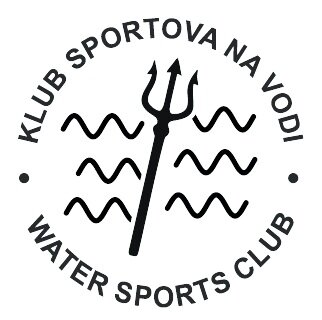We offer more then 30 famous diving location
WWII Wrecks , Wreck of airplane Junkers 87 , Walls with coralls , UW rocks , Antique diving places , etc
Wreck GLADIATOR F98, Ship Wreck Borak , Fishing boat wreck Borko , Wreck of Plavi Jadran , Wreck of no name Torpedo boat etc
.: Wreck WWII FRANCESCA DI RIMINI :.
Wreck is under Protection of Ministry of Culture Republic of Croatia
Nice Ship Wreck from WWII nearby Island Kaprije in Croatia. Diving trips with Water Sports Club Tisno http://www.croatia-scuba-diving.com
Also called KAPRIJE, because it lies under the water near the island KAPRIJE. It sank in 1943, but the circumstances of its sinking are not very well known. It was probably hit by a torpedo thrown from airplane, which exploded at the starboard. The shipwreck of a transport ship with the length of about 60 m lies at the seabed in the depth of 50-52 m, slightly inclined towards its left side, the board begins in the depth of 40 m and the fore is in the depth of 45 m and the larboard in 45/47 m. It has 3 rowan masts, one in the fore part is 28 m high, the other leans to the left side of the ship. The shipwreck has no propeller, it is not known who and when dismantled it. In the storage areas secured by steel nets, there is also a great amount of artillery ammunition. The shipwreck has no extensions, it is prohibited to swim into the storage areas. Diving to the shipwreck is realized in groups of 2-4 persons, for divers with the minimum certification P2 CMAS, AOWD with specialization Deep Diver. We recommend to take flashlights, computers with you. Our ship anchors next to a buoy on the water surface. We hang two bottles with two automats for potential decompression. The group of divers swims to the second displacement of the ship (approx. 3-4 m under the water surface), afterwards we dive along the descending rope. Under good conditions, the shipwreck is visible already in the depth of 15 m. Under common conditions, it is visible in the depth of 25 m. By the rope we are descending to the poop of the shipwreck (where the descending rope is attached), we swim to the fore along the starboard and we are examining holes caused by the torpedo, tiny elements of the ship's equipment, boxes with antiaircraft and artillery ammunition. We recommend to swim 1,5-2 m above the board of the ship. On the fore, we examine the anchor lying in the depth lower than 52 m, then we swim to the poop along the larboard and we avoid overturned masts covered by green sponges. We swim around the poop, around the place of the former propeller, we peep into the engine room. At this moment, 10 minutes of diving should have passed, some computers already signal the second decompression pause. Since this moment, we are deciding when to come up above the water. During coming up above the water, we can still see the shipwreck one more time, we should also "miss" one (the deepest) decompression pause, afterwards we go through another, shallower decompression. The total time of diving takes about 20-24 minut. In the shipwreck, 2 big eels (about 2,5 m) lived once, unfortunately we have not been meeting them again recently. Besides, one can also meet big Scorpenidae, tripletails and shoals of mackerels and basses. The shipwreck is very suitable for taking photos and filming, you need a strong light. Diving to the shipwreck is safe provided you do not enter the storage areas, you do not swim into the inside of the ship and you observe the time of the stay under the water and time of decompression. Experiences from diving to this shipwreck remain imprinted in one's memory for a long time
WWII Junkers 87 Wreck nearby Žirje Island
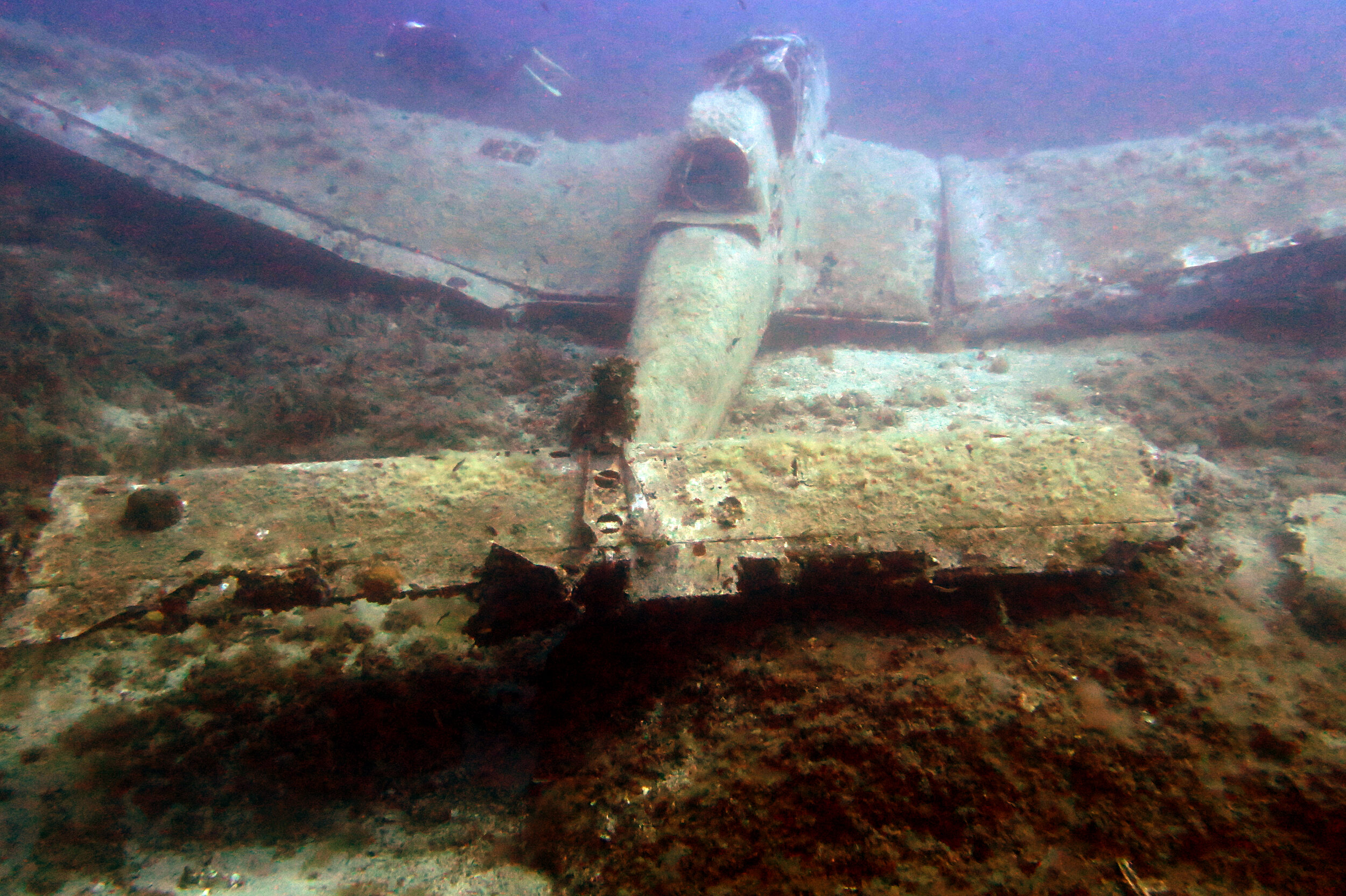
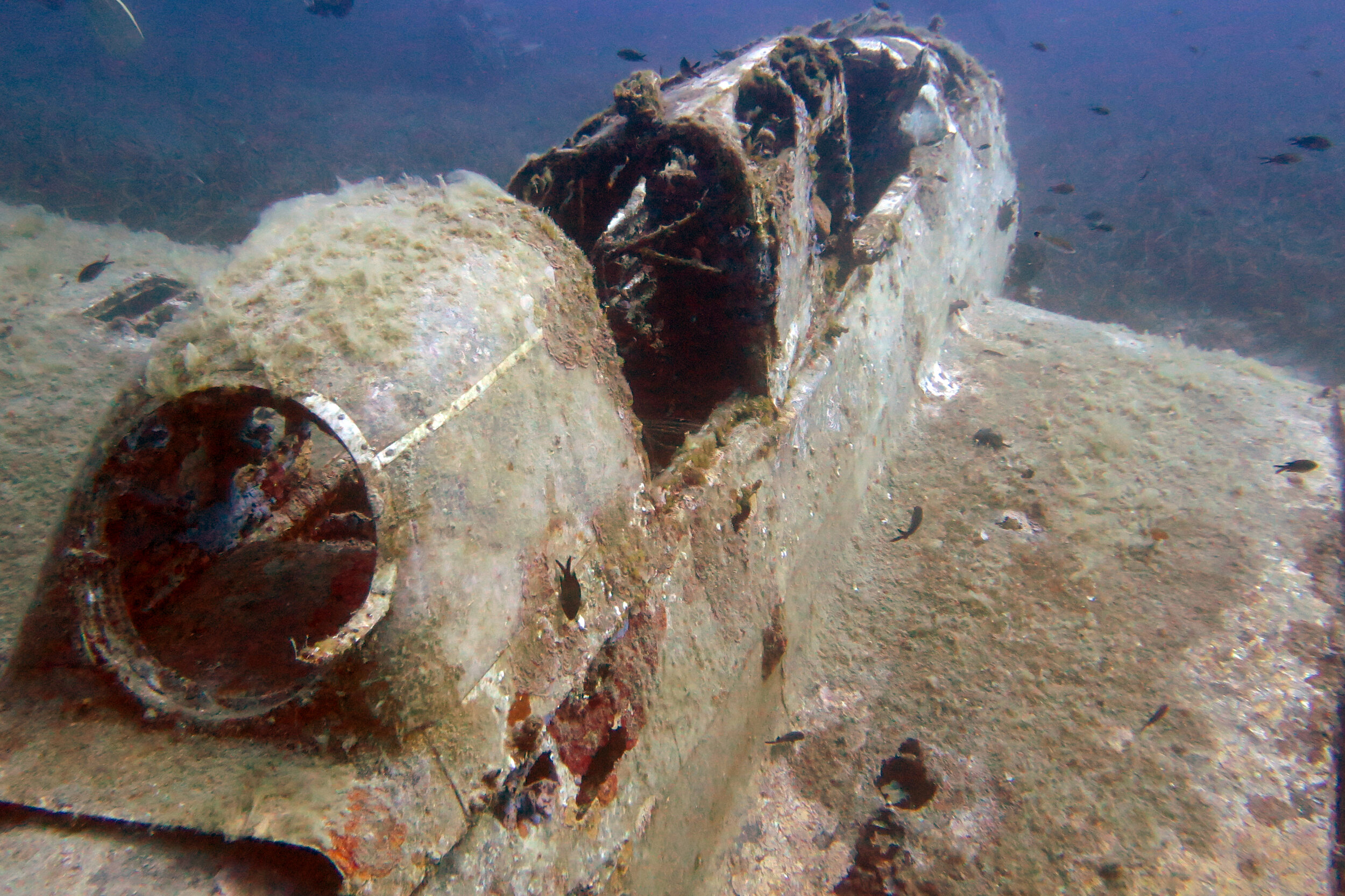
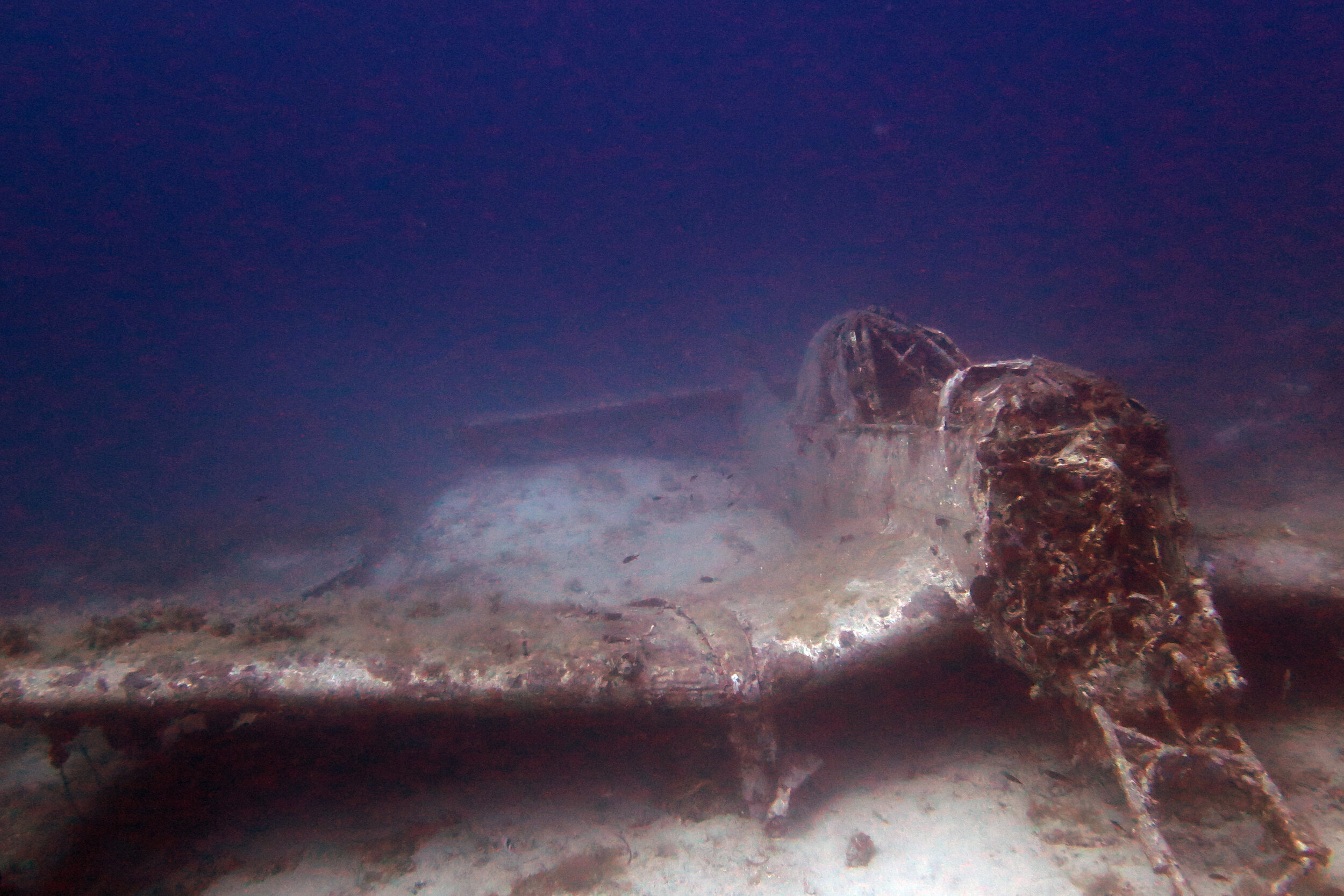
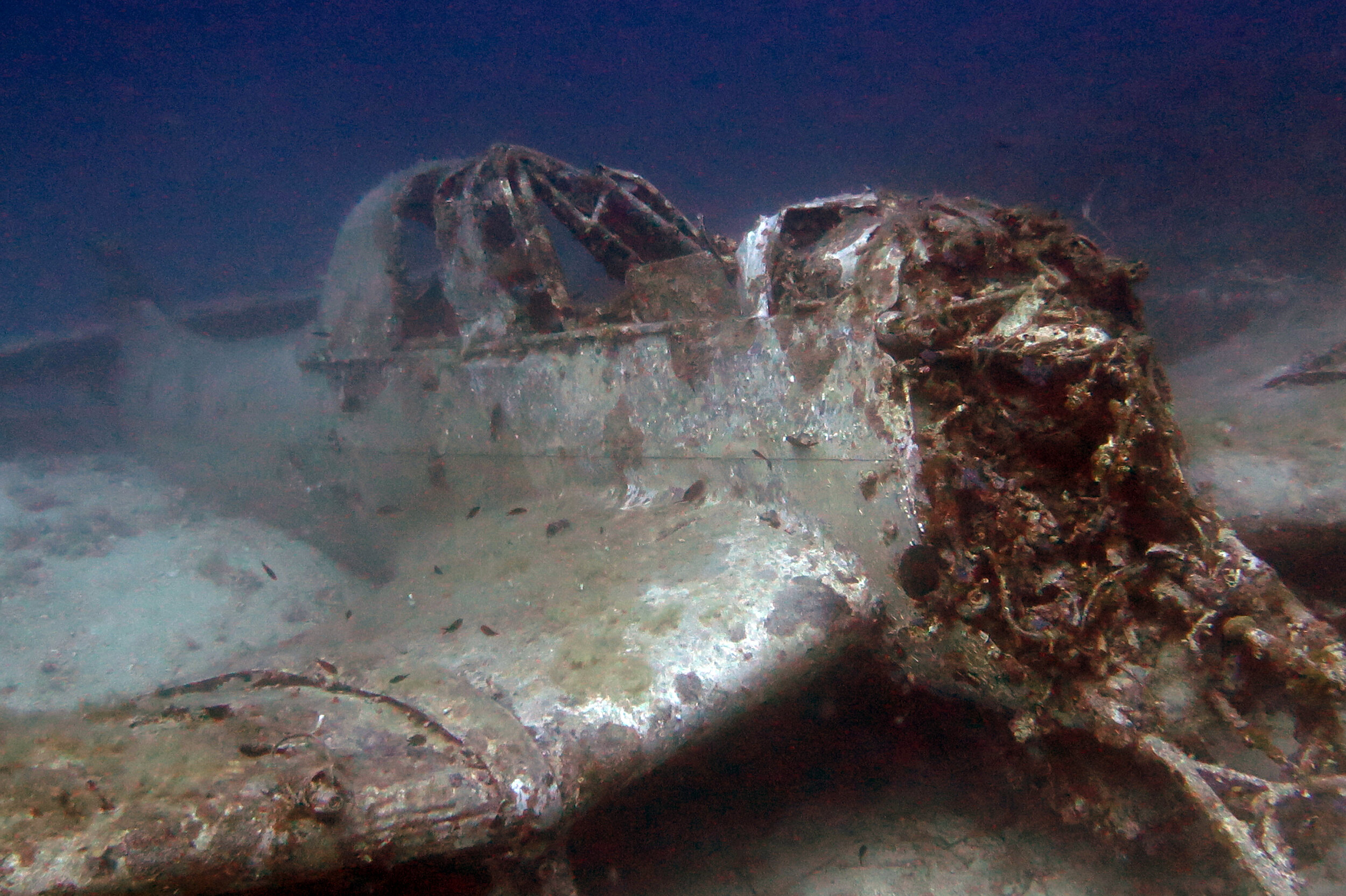
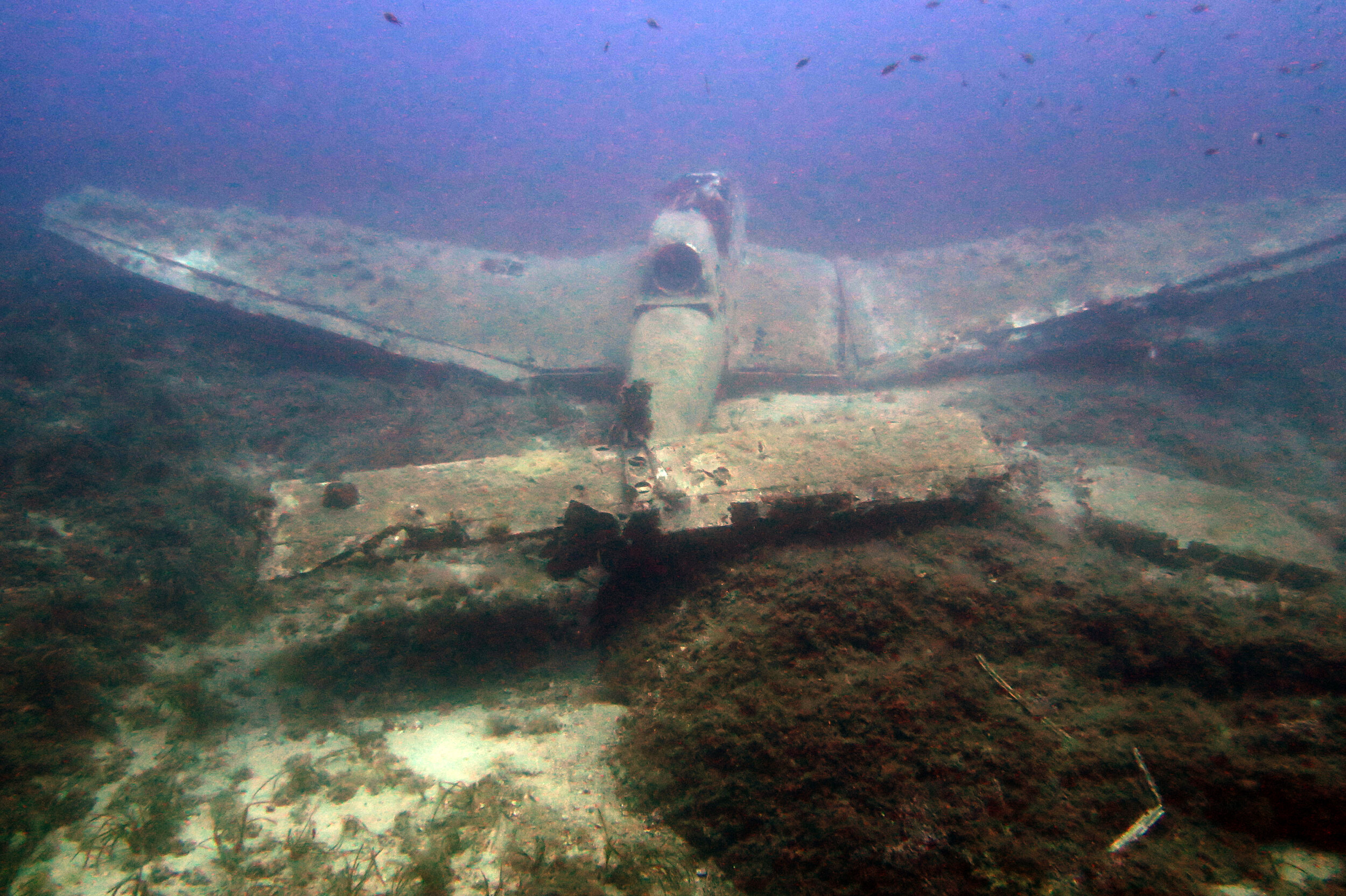
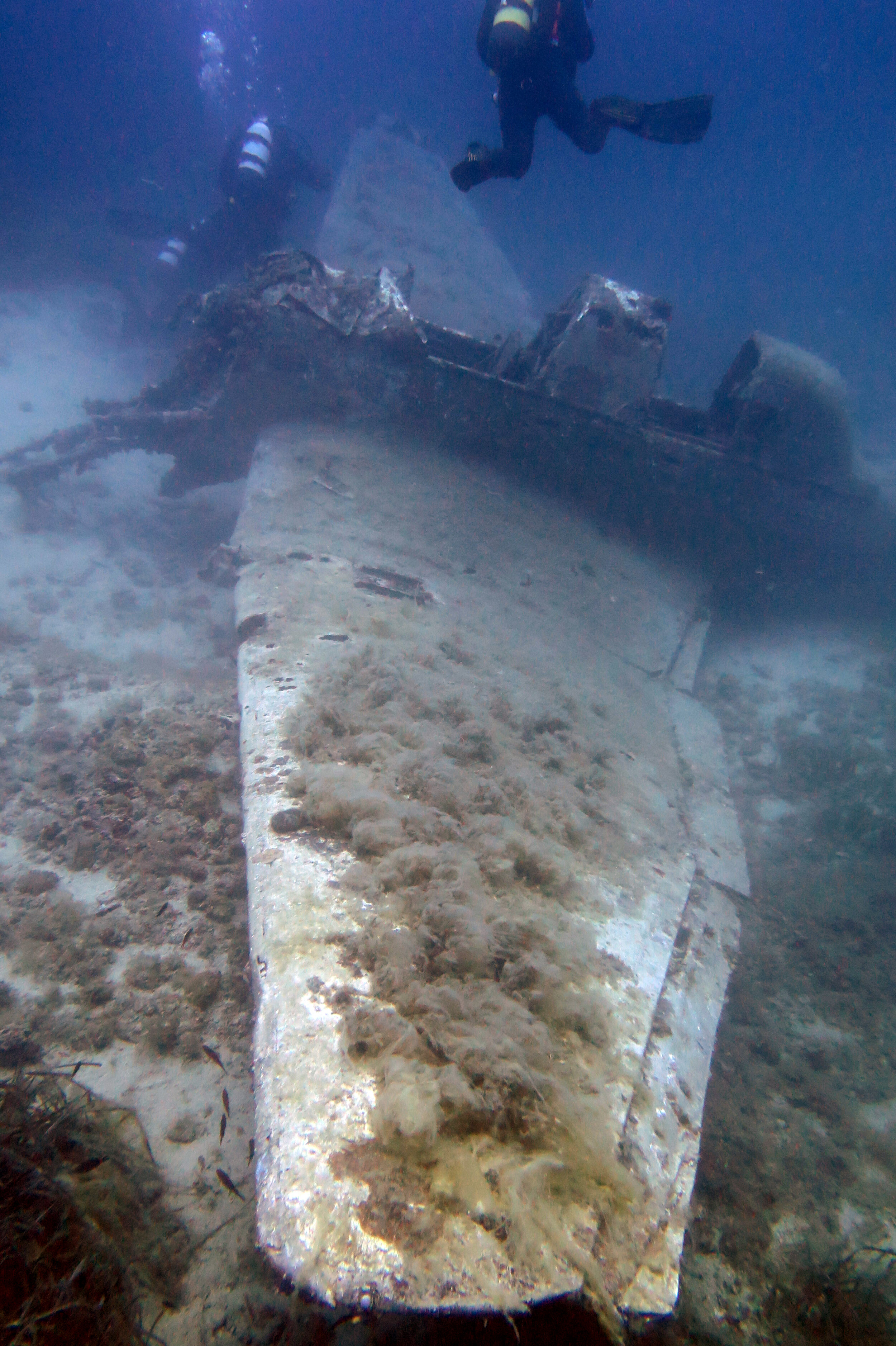

The Junkers Ju 87 or Stuka
(from Sturzkampfflugzeug, "dive bomber") was a German dive bomber and ground-attack aircraft. Designed by Hermann Pohlmann, it first flew in 1935. The Ju 87 made its combat debut in 1937 with the Luftwaffe's Condor Legion during the Spanish Civil War and served the Axis forces in World War II.
The aircraft is easily recognisable by its inverted gull wings and fixed spatted undercarriage. Upon the leading edges of its faired main gear legs were mounted the Jericho-Trompete (Jericho trumpet) wailing sirens, becoming the propaganda symbol of German air power and the so-called Blitzkrieg victories of 1939–1942. The Stuka's design included several innovations, including automatic pull-up dive brakes under both wings to ensure that the aircraft recovered from its attack dive even if the pilot blacked out from the high g-forces.
The Ju 87 operated with considerable success in close air support and anti-shipping at the outbreak of World War II. It led air assaults in the invasion of Poland in September 1939. Stukas were critical to the rapid conquest of Norway, the Netherlands, Belgium and France in 1940. Though sturdy, accurate, and very effective against ground targets, the Stuka was, like many other dive bombers of the period, vulnerable to fighter aircraft. During the Battle of Britain, its lack of manoeuvrability, speed and defensive armament meant that it required a heavy fighter escort to operate effectively.
After the Battle of Britain, the Stuka was used in the Balkans Campaign, the African and Mediterranean theatres and the early stages of the Eastern Front, where it was used for general ground support, as an effective specialised anti-tank aircraft and in an anti-shipping role. Once the Luftwaffe lost air superiority, the Stuka became an easy target for enemy fighter aircraft. It was produced until 1944 for lack of a better replacement. By 1945 ground-attack versions of the Focke-Wulf Fw 190 had largely replaced the Ju 87, but it remained in service until the end of the war.
An estimated 6,500 Ju 87s of all versions were built between 1936 and August 1944.
Oberst Hans-Ulrich Rudel was the most successful Stuka pilot and the most highly decorated German serviceman of the Second World War.
.: Lighthouse - KUKULJARI :.
More exactly KUKULJAR. It is a small island with a lighthouse not far from the island Murter. It is a flat stony desk rising as far as 3 m above the sea level. Its edges are not even, they are sharp, hardly accessible. There are three currents, sometimes really strong. The water along the west edge is shallow, the seabed descends gradually and it is covered by grasses. That is where we usually throw out the anchor. We dive around the island counterclockwise. We descend along stony-sand terraces southward and we dive into the depth of 25/30 m behind the edge of the last terrace at the wall that descends towards the sandy seabed in the depth of about 40-45m. On the wall, there is plenty of fishes and whiskers of several crawfishes peek out from gaps. You can meet guitarfishes and eels in the holes near the seabed. Shoals of shiny cow breams (Sarpa salpa) swim through the wall. In the shallow waters, shoals of seabreams (Diplodus vulgaris) sunbathe, on the wall you will find corals, colourful sponges, nudibranchia snails, coelenterata. We can spot octopuses among stones in the shallow waters. It is a very interesting place, one of the most beautiful places on the local sea, suitable for all divers and even for snorkeling. A calm swimming around the place takes about 15 minutes. We swim the island around usually two times, firstly in the depth of about 30 m, then in the depth of 5-10 m. At Kukuljari, we also realize night diving, when the divers can meet Scorpenidae, octopuses, eels, crawfishes and squids. On the northern side of the island Kaprije, there is a two-terrace wall. First edge starts already in the depth of 8-12 and descends into 20, the second terrace descends to the edge of the other side in the depth of 30-32 m and afterwards, it falls perpendicularly into the depth of 45-55 m, towards the seadbed. The wall is sloped near the seabed, guitarfishes, crawfishes and eels gather there. The bottom wall is densely covered by sponges. The shallower side is overhanging, the sea washed out holes and gaps in it. It is possible to swim carefully under the overhangs in the way that sponges and corals are not damaged. Sometimes you can see Scorpenidae in the gaps. We recommend this place to all divers, we also dive here at night (as the second night diving). There are currents that can be taken advantage of. In the depth of 20 m, the south-western current in the direction of diving is slightly perceptible. Approx. after 100 m, the wall bends northward in the angle of 90°. After the bend, we swim about 50 to 100m more, in the depth of 10-15 m. Afterwards we rise above the wall and we return with the current towards the ship. On the way back there is a great chance that we come across shoals of mackerels and seabreams (Diplodus vulgaris). In the shallow waters under the stones and in the rifts, there are octopuses hidden. .
.: DIVING SITE - ČAVLIN - reef :.
An underwater hump, ridge located northward from the island CAVLIN. In the sea there is a shallow water about 6 m under the water surface. The ship waits anchored above the top of the underwater hump. We dive westward. In the depth of about 15/20 m there is an extensive, uneven wall descending into the depth of 60 meters or deeper (78 m according to the map). Behind the edge we swim to the right along the wall, towards a distinct spur. On the wall there are sponges and also - in a greater depth - sea whips. At the seabed there are holes and in the depth of about 30 m there are two small caves, into which we will peek. On the wall, you can meet crawfishes, lobsters and also Scorpenidae. Through the wall, shoals of seabreams and fishes Coris jutis are sometimes swimming. In the shallow water there are many sea urchins and also shoals of seabreams (Diplodus vulgaris). Octopuses live in the surrounding rifts. The place is suitable for all divers, even for snorkeling, deeper diving only for CMAS P2 and AOWD. Sometimes there is quite a strong current from west and this makes it more difficult to return to the ship and swim to the wall.
.: Stairways- KAPRIJE :.
A two-terrace wall begins on the headland of Kaprije. The edge of the first of them already begins in the depth of 8-12 meters and descends into 20 meters. The subsequent second edge of the wall bites into the first wall in the depth from 30 to 32 meters and further descends as far as 50-55 meters deep, where it pases into a sandy seabed. In the wall there are grooves where crawfishes and octopuses are abundant. The bottom wall is densely covered by sponges. The shallower wall is actually an overhang, where the sea formed grooves and holes. It is possible to swim under the overhang carefully, in the way that one can enjoy a dense cover of humis and soft corals without damaging them. Air bubbles that you breathe out get caught under the overhang and they form a magnificent mirror effect. The locality is recommended for all types of divers. We also hold here night dives, which are an especially interesting experience. Under the stones and in the holes, hogfishes are hidden.
